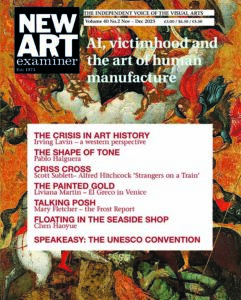
This is how a committee will review your work
Study the OLD to discover the NEW:
Understand the PAST to invent the FUTURE.
Curators and managers represents two different approaches for the management of museums. Curators value the masterpieces and many times forget management. Managers value daily management and sometimes forget about the masterpiece.
UNESCO: Main Functions

- Laboratory of ideas
- Reinforcing the global agenda
- Setting norms and standards
- Fostering international cooperation
- Developing policies and capacities
Declaration
Moral or political commitment, linking States on the basis of good faith Intended to encourage member states to adopt a particular approach or to act in a given manner in a specific sphere.
Recommendation
A recommendation does not create a legally binding obligation for the member states.
Convention
Synonymous with a treaty, it implies the joint will of the parties upon whom the convention imposes binding legal commitments.
The 1972 convention:
192 member state:
- In a single document, they linked the concepts of nature conservation and preservation of cultural properties together
- Sets out the duties of member state parties in protecting their national heritage • Establishes the World Heritage Lists, recognizing that certain places on Earth are of “outstanding universal value” and should form part of the common heritage of humankind,
- to represent a masterpiece of human creative genius;
- to exhibit an important interchange of human values, over a span of time or within a cultural area of the world, on developments in architecture or technology, monumental arts, town-planning or landscape design;
- to bear a unique or at least exceptional testimony to a cultural tradition or to a civilization which is living or which has disappeared;
- to be an outstanding example of a type of building, architectural or technological ensemble or landscape which illustrates (a) significant stage(s) in human history;
- to be an outstanding example of a traditional human settlement, land-use, or sea-use which is representative of a culture (or cultures), or human interaction with the environment especially when it has become vulnerable under the impact of irreversible change.
- to be directly or tangibly associated with events or living traditions, with ideas, or with beliefs, with artistic and literary works of outstanding universal significance. (The Committee considers that this criterion should preferably be used in conjunction with other criteria);
- to contain superlative natural phenomena or areas of exceptional natural beauty and aesthetic importance;
- to be outstanding examples representing major stages of earth’s history, including the record of life, significant on-going geological processes in the development of landforms, or significant geomorphic or physiographic features;
- to be outstanding examples representing significant on-going ecological and biological processes in the evolution and development of terrestrial, fresh water, coastal and marine ecosystems and communities of plants and animals;
- to contain the most important and significant natural habitats for in-situ conservation of biological diversity, including those containing threatened species of outstanding universal value from the point of view of science or conservation.
Every six years, the member states parties are invited to submit, to the World Heritage Committee, a periodic report on the application of the World Heritage Convention (legislative/administrative provisions adopted and other actions taken), including the state of conservation of the World Heritage properties located in their territory.
2003 Updated Convention:
The “intangible cultural heritage” means the practices, representations, expressions, knowledge, skills – as well as the instruments, objects, artifacts and cultural spaces associated therewith that communities, groups and, in some cases, individuals recognize as part of their cultural heritage. This intangible cultural heritage, transmitted from generation to generation, is constantly recreated by communities and groups in response to their environment, their interaction with nature and their history, and provides them with a sense of identity and continuity, thus promoting respect for cultural diversity and human creativity.
Along with an exposition on ICOM (Museums) they state:
Arts Organizations (along with organizations such as banks, doctors, and hair salons) are providing a service (at least), not a physical product.
Visitors/customers consume art to achieve a benefit through it. In particular, some benefits could be:
- Explicit (declared by the visitor)
- Implicit (undeclared or unknown by the visitor) The understanding of the benefit researched by the customer/visitor is fundamental to properly organize and manage the service’s delivery by the cultural institution and set the proper servicescape.
(acronyms and jargon. Welcome to the contemporary art arena. ed).

